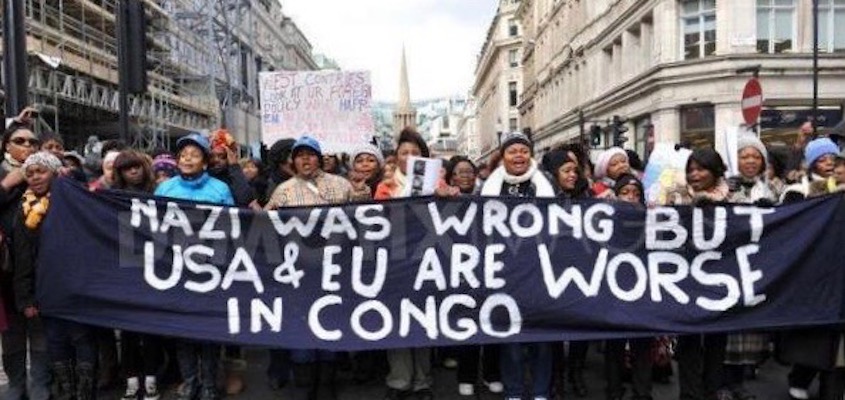by ANN GARRISON

“The Belgians had made it clear, before independence, that they did not intend to cede control of its wealth to the Congolese.”
Syria has long dominated international headlines while the big powers discuss the possibility of dividing it into smaller, more homogeneous states along ethnic or religious lines. The Democratic Republic of Congo is rarely if ever at the top of the Western headlines, but heads of state and so-called experts have long made similar proposals to carve out new, smaller, more homogeneous nations in Congo’s resource-rich eastern provinces. I spoke with Congolese scholar and activist Boniface Musavuli about the plans.
Ann Garrison:Boniface, can you summarize the history of proposals to divide up the eastern provinces of the Democratic Republic of the Congo?
Boniface Musavuli:Attempts to break up the Congo began as soon as the country became independent in 1960. First there was the Katangese secession, from 1960 to 1963, led by Moïse Tshombe with the support of Belgium, the colonial power that Congo had just freed itself from, in name at least. Katanga is Congo’s most southeastern province, bordering Angola, Zambia, and Tanzania, which makes it easier to slice off, like the rest of the resource-rich eastern border provinces. Katanga is also Congo’s most mineral-rich province, and the Belgians had made it clear, before independence, that they did not intend to cede control of its wealth to the Congolese.
Another secession began in the southern part of Kasai Province, which borders Katanga. These secessions were defeated by UN forces and the Congolese army led by Lieutenant-General Joseph-Désiré Mobutu, who was then chief of staff of the armed forces.
In October 1996, Rwandan President Pasteur Bizimungu called for the organization of a new Berlin Conference to allow Rwanda to take possession of part of eastern Congo. Bizimungu was a Hutu figurehead concealing the minority Tutsi rule that General Paul Kagame had reestablished at the end of the 1990-1994 invasion, war, and genocide in Rwanda.
At the same time, US official and corporatist Walter Kansteiner began advocating ethnic Balkanization, including the creation of a homogeneous Tutsi state in eastern Congo.
AG:I’ve read about Kansteiner. He was Bill Clinton’s National Security Council Advisor for African Affairs, then he became Deputy Spokesman for Clinton’s National Security Council, and in 2002, he became George W. Bush’s Assistant Secretary of State for African Affairs. He’s been involved in mergers, acquisitions, and privatizations all over Africa, and he owns a commodity trading firm in Chicago that specializes in tropical products. He’s a member of the Corporate Council on Africa, the Council on Foreign Relations, and the African Development Foundation.
BM:Yes, that’s him. And he began advocating for the Balkanization of Congo along ethnic lines in October 1996.
AG: October 1996 was also the month when Uganda and Rwanda invaded the Congo, formed a coalition army with Laurent Désiré Kabila, and drove Congolese President Mobutu Sese Seko into exile seven months later.
BM:Yes, and then in 1998, during the Second Congo War, the DRC and its vast resources were divided into three main parts, even though there was no formal secession. One part was controlled by Congolese President Laurent-Désiré Kabila and his allies, another by Rwandan President Paul Kagame and his allies, and the third by Ugandan President Yoweri Museveni and his allies. This de facto partition of the country ended in 2003 when the Sun City peace agreement was signed in South Africa.
Black Agenda Report for more
